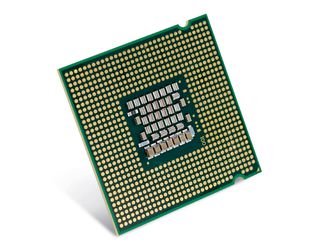
Back in 1971, the world of electronics was shaken up by the announcement of a 'computer on a chip'.
This was Intel's 4004, the world's first microprocessor. However, despite the hype, this was no single chip solution. Like virtually all processors that have come after it, the 4004 required a considerable level of support electronics before it could do anything useful.
Thirty-seven years on, there's an undeniable feeling of deja vu. The world is once again talking about a computer on a chip.
High speed
The chip that everyone's talking about is AMD's Swift, which is due to launch in the second half of next year. Like Intel's Atom, Swift will be aimed at the mobile computing market.
Whereas Atom is a conventional x86 processor, Swift combines the functionality of the CPU (central processing unit), the GPU (graphics processing unit) and the core logic chipset that provides the interface to the memory.
Despite AMD remaining tight lipped about the technology, details of this APU (accelerated processing unit) have recently started to emerge. AMD is not abandoning the multi-core model that has so dominated other processor markets. Using the same Star cores that are used in the Phenom processor, Swift will come in two flavours: Swift White with a single core and Swift Black with dual cores.
Get daily insight, inspiration and deals in your inbox
Get the hottest deals available in your inbox plus news, reviews, opinion, analysis and more from the TechRadar team.
Low power
Also planning to take this new market by storm is Nvidia with its Tegra 600 and 650 chips. Tegra is referred to as a heterogeneous architecture with multiple processors, each designed for a specific class of tasks.
A CPU core from ARM and the on-chip interface circuitry (the 'chipset') work in conjunction with the GeForce GPU, an imaging processor, an HD video processor and an audio processor. Nvidia's claims about the chip's power consumption are impressive: Tegra promises 34 hours of high-definition video playback on a single battery charge.
Of course, neither Swift nor Tegra can genuinely be called computers on a chip, as they lack a number of vital components – most notably memory. This is unlikely to change.
Chip fabricators need to provide computer manufacturers with the flexibility to adapt the solution to the application, and that means being able to decide how much memory is needed. Yet the economics of semiconductor manufacturing places severe limitations on how many variants of a chip it's viable to produce.
Is PC chip pie in sky?
So, is the familiar promise of a computer on a chip a hollow one? Not at all: if you want a single-chip solution containing the processor, RAM, non-volatile program memory and an interface to the outside world, you can buy one for less than 25p in bulk.
Don't expect to find it at the heart of a mobile computer, though. Expect an eight-bit architecture, 4MHz clock speed and 512 bytes of RAM. It's called a PIC, and you'll find it in such demanding applications as TV remote control units and washing machines.
In the future, though, we can expect the next generation of so-called computers on a chip in the world of mobile computing to bring us genuinely impressive levels of performance while on the move.
Most Popular
